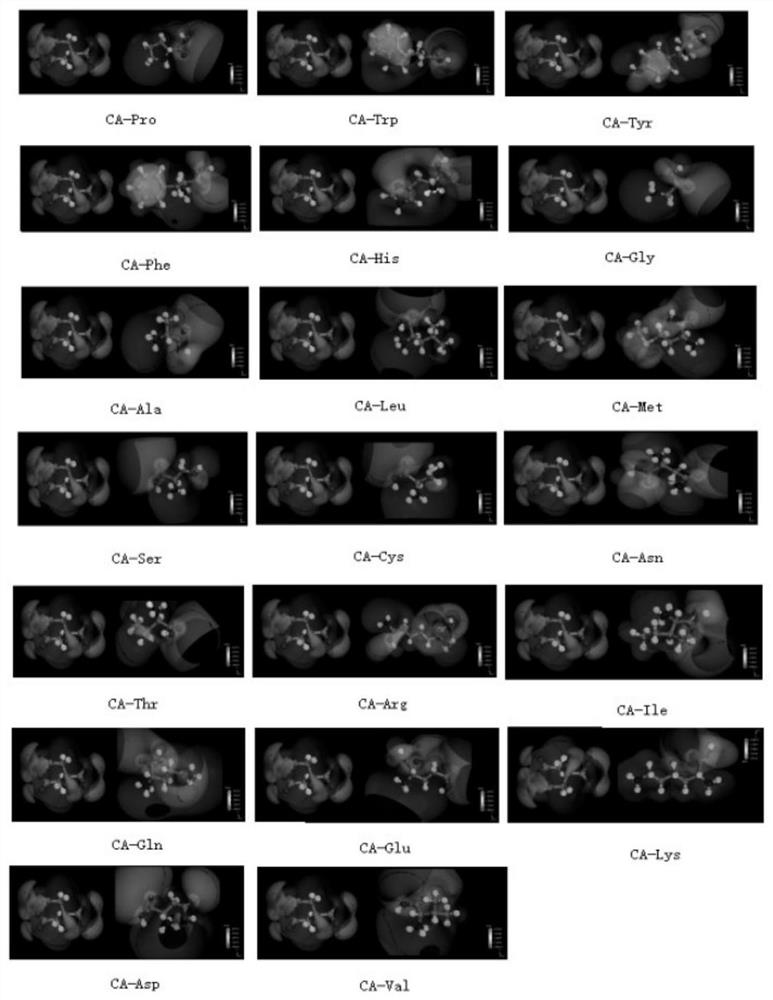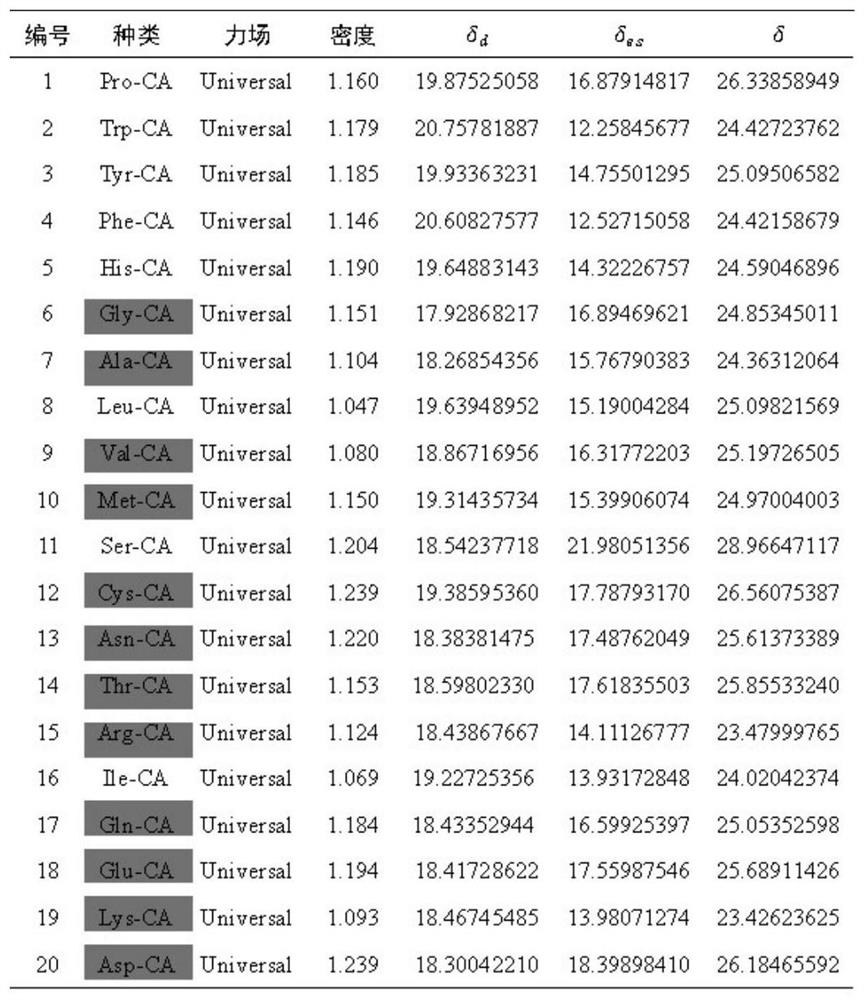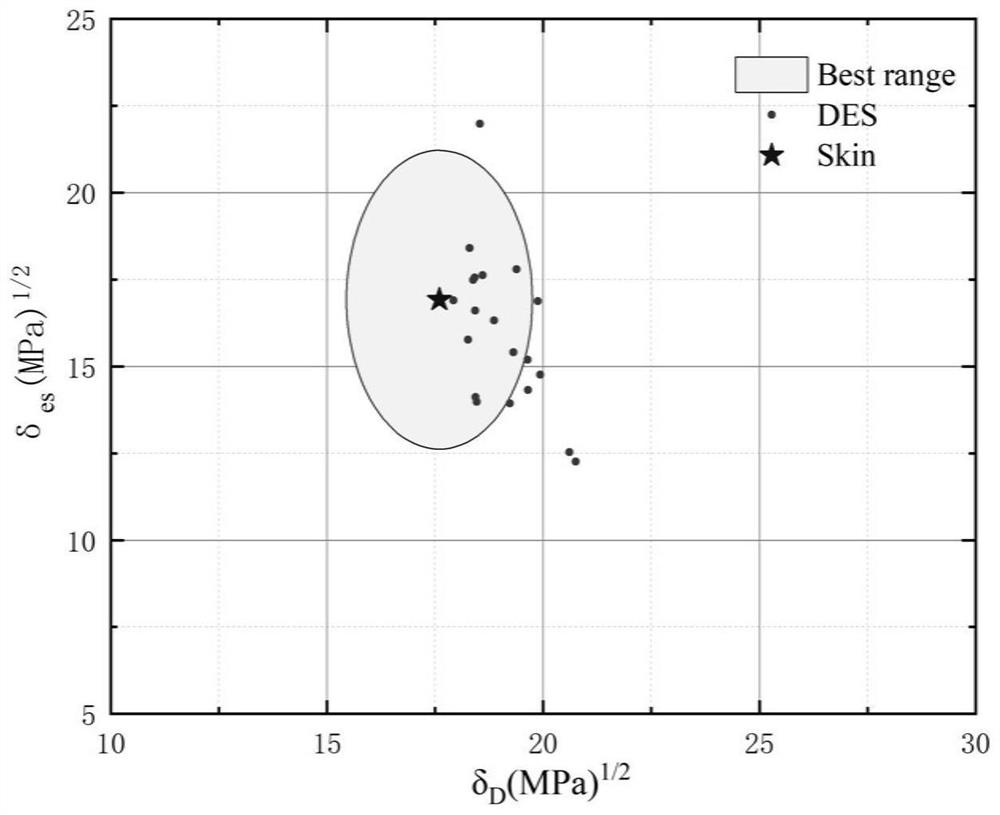Preparation method of mesoporous silica nanoparticle transdermal delivery eutectic system
A technology of mesoporous silica and nanoparticles, which is applied in the field of medicine, can solve the problems of little understanding of the interaction of nanoparticles, etc., and achieve the effects of improving patient compliance, improving drug bioavailability, and increasing dispersibility
- Summary
- Abstract
- Description
- Claims
- Application Information
AI Technical Summary
Problems solved by technology
Method used
Image
Examples
Embodiment 1
[0027] Hansen solubility parameter is a method to evaluate the skin penetration ability of substances. Hansen solubility parameter (HSP) is the ability to evaluate the intermolecular dispersion force δD, polar force δP and hydrogen bond interaction force δH. It is generally believed that a substance The closer the solubility parameter of DES is to the solubility parameter of skin, the better the skin penetration ability will be, so this index can be used to screen out DES with better effect.
[0028] Hansen Solubility Parameters (HSP) were analyzed by computer, and the materials studio software was used to draw the 3D molecular structures of the prepared 20 kinds of amino acid-citric acid eutectic systems, such as figure 1 As shown; and establish a simulation box to calculate the potential distribution through the Dmol3 module, select the force field as Universal, set the initial density as 1, and use the Forcite module to perform geometric optimization and dynamic calculation ...
Embodiment 2
[0030] A method for preparing a mesoporous silica-citric acid-amino acid eutectic system. In this embodiment, lysine is selected to prepare a eutectic system. The specific process is as follows:
[0031] (1) Dissolve 16g of trimethylhexadecylammonium chloride (CTAC) in 100mL of deionized water, heat to 95°C, stir to dissolve, then add 0.5mL of triethanolamine (TEA), continue to stir for 1 hour, then gradually Add 12 mL tetraethyl orthosilicate (TEOS) dropwise, continue to react for 1 hour until a white suspension is produced, and centrifuge at 13500 rpm to obtain precipitates that are silica nanoparticles;
[0032] (2) The precipitate in step (1) was refluxed in the mixed solution of hydrochloric acid / methanol (1:4 volume ratio) for 6 hours, then centrifuged to obtain the precipitate, and the above reflux operation was repeated three times to remove the template agent CTAC, and finally obtained The precipitate was washed three times with ethanol and deionized water, centrifuge...
Embodiment 3
[0043] Prepare MSNs-CA-Lys loaded with fluorescein isothiocyanate, and investigate the transdermal ability of MSN-CA-Lys. The specific steps are as follows:
[0044] (1) Dissolve 16g of trimethylcetylammonium chloride (CTAC) in 100mL of deionized water, heat to 95°C, stir to dissolve, add 10mg of FITC fluorescent dye dissolved in 3mL of ethanol solution, and then add 0.5mL of three Ethanolamine (TEA), continued to stir for 1 hour, then added 12 mL of tetraethyl orthosilicate (TEOS) dropwise, and continued to react for 1 hour until a white suspension was produced, which was centrifuged at 13,500 rpm to obtain precipitates that were silica nanoparticles;
[0045] (2) The precipitate in step (1) was refluxed in the mixed solution of hydrochloric acid / methanol (1:4 volume ratio) for 6 hours, then centrifuged to obtain the precipitate, and the above reflux operation was repeated three times to remove the template agent CTAC, and finally obtained The precipitate was washed three tim...
PUM
| Property | Measurement | Unit |
|---|---|---|
| Particle size | aaaaa | aaaaa |
Abstract
Description
Claims
Application Information
 Login to View More
Login to View More - R&D
- Intellectual Property
- Life Sciences
- Materials
- Tech Scout
- Unparalleled Data Quality
- Higher Quality Content
- 60% Fewer Hallucinations
Browse by: Latest US Patents, China's latest patents, Technical Efficacy Thesaurus, Application Domain, Technology Topic, Popular Technical Reports.
© 2025 PatSnap. All rights reserved.Legal|Privacy policy|Modern Slavery Act Transparency Statement|Sitemap|About US| Contact US: help@patsnap.com



